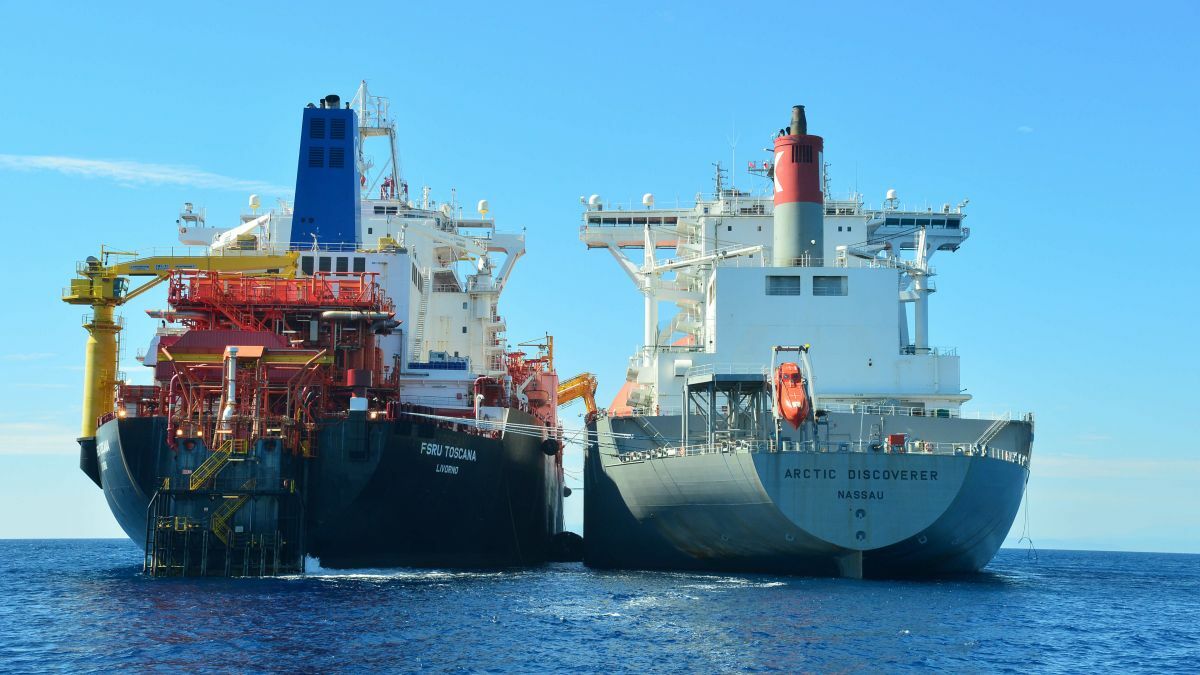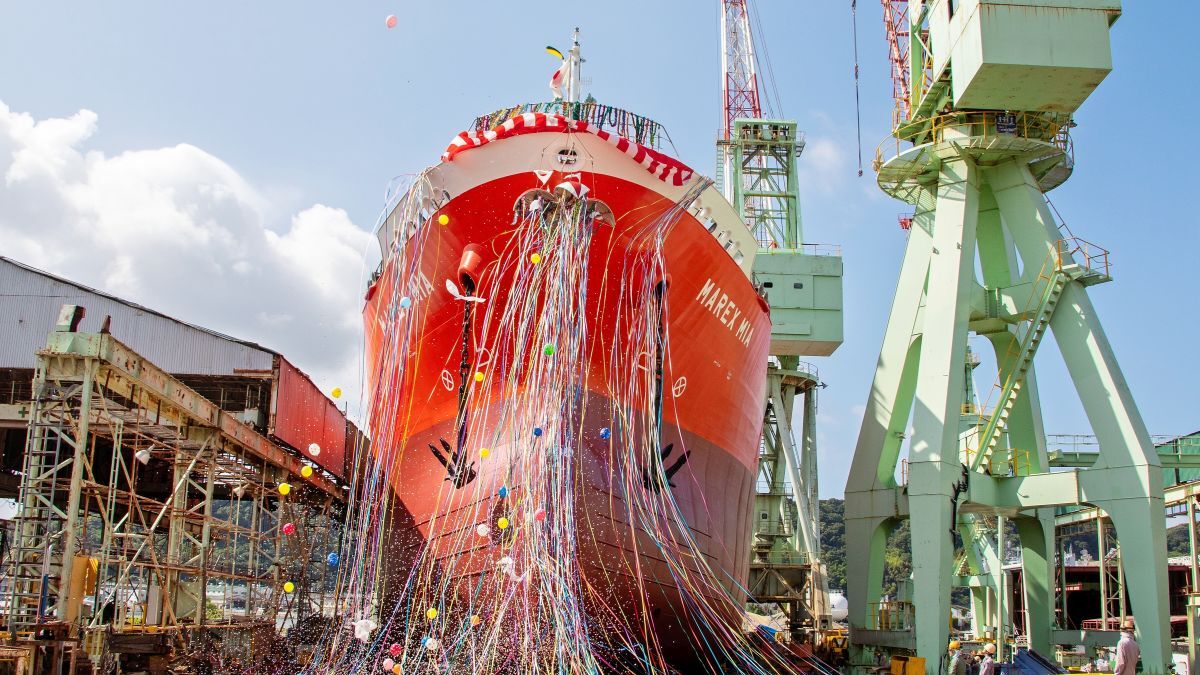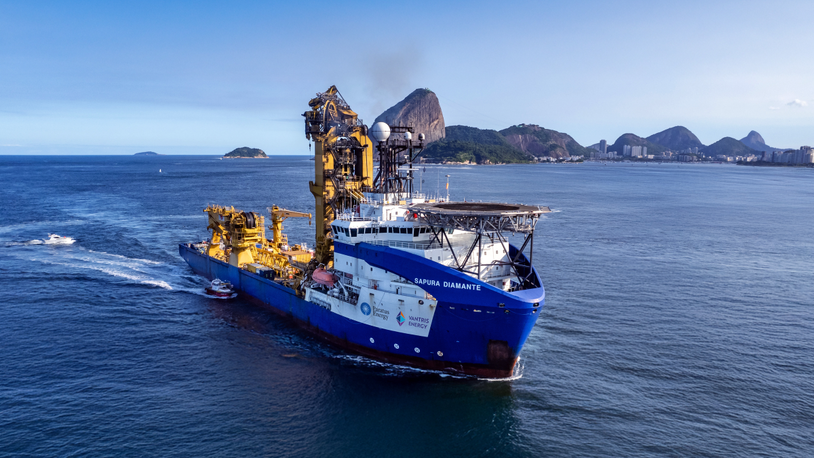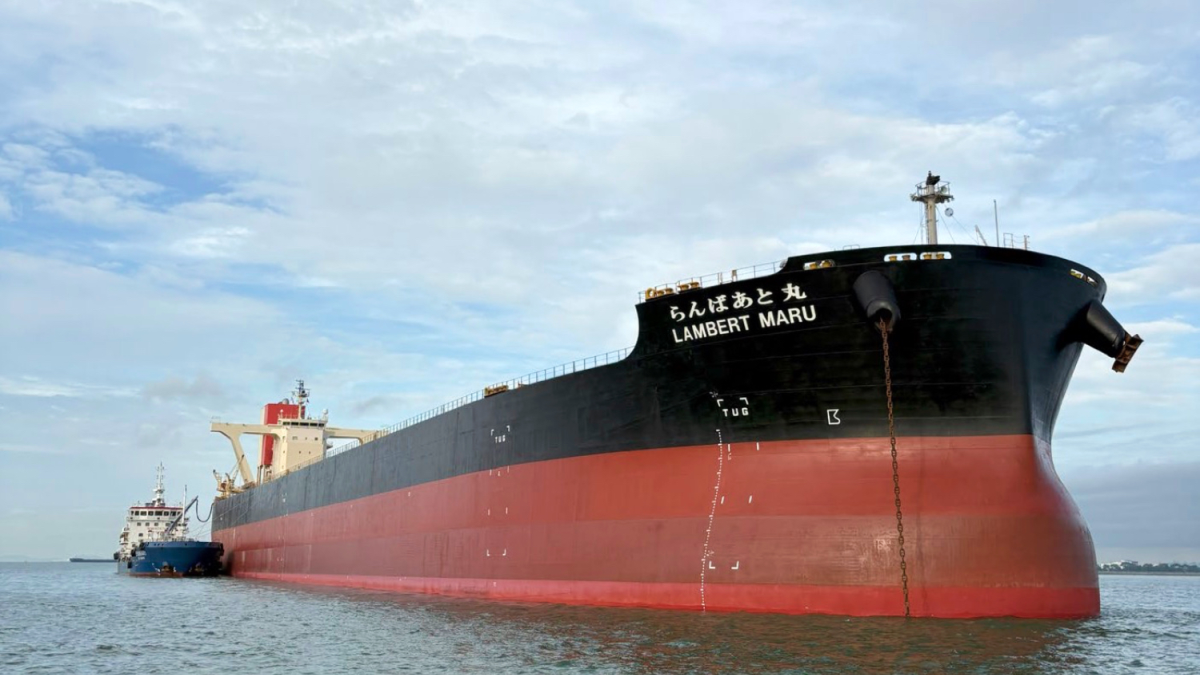Business Sectors
Contents
G4 upgrade lifts LM2500 to another performance level
Over 35 years’ evolution of GE’s flagship marine gas turbine has yielded increases in power rating from the original 18MW to around 35MW for the latest LM2500+G4 design, with rises in thermal efficiency from around 36 per cent to over 40 per cent
General Electric introduced its first aero-derived gas turbine, the LM100, in 1959 and in the same year the LM1500, derived from the successful J79 aircraft engine. The first LM1500 installation, serving the hydrofoil vessel H.S.Denison, was followed by over 160 applications in land-based catapults, pipeline pumping systems, marine propulsion and power generation.
Destined to be the mainstay of the US designer’s programme, the LM2500 arrived in 1969 and has since benefited from developments which have more than doubled its initial rating of around 15MW.
Other models subsequently joined the LM-series portfolio, which now embraces four simple-cycle designs with maximum power ratings from around 4,500kW to 43MW and thermal efficiencies up to 42 per cent (see table).
Valuable experience from LM-series gas turbines in naval propulsion applications ranging from patrol craft to aircraft carriers was tapped by GE in targeting commercial vessel projects during the 1990s, its marketing efforts rewarded by a number of large cruise ship and fast ferry references.
The LM500 is a two-shaft gas turbine derived from GE’s TF34 aircraft engine; the LM1600 is a three-shaft gas turbine derived from the F404 engine; and the LM6000 is a two-shaft gas turbine based on the CF6-80C2 engine. The most successful models in the commercial and military marine markets are the LM2500 and LM2500+ models.
Developed from GE’s military TF39 and commercial turbofan aircraft engines, the LM2500 marine gas turbine is a simple-cycle, two-shaft second-generation aero-derived design based on these four main elements:
• a 16-stage axial-flow compressor, with an 18:1 pressure ratio, has variable inlet guide vanes; the first six stages feature variable stator vanes promoting easy starting, good part-load performance, high efficiency and a high stall margin over the entire operating range
• fully annular, straight-through flow combustor, with 30 externally mounted and replaceable fuel nozzles supporting liquid fuel combustion and ensuring uniform gas temperatures to the turbine; virtually smokeless operation is claimed through the complete power range even when burning heavy distillate fuels
• two-stage high pressure turbine, air cooled for a long life, which drives the compressor and accessory-drive gearbox; it selectively uses convection, impingement and/or film cooling on the blades and vanes; the air-cooled turbine airfoils result in a significant increase in firing temperature while maintaining metal temperatures lower than first generation engines
• six-stage low pressure free power turbine: a low speed, low stress machine aerodynamically coupled to the gas generator and driven by the latter’s exhaust gas flow.
The accessory gearbox provides mounting and mechanical power transmission for an integrated starter, fuel pump and main fuel control, lube/scavenge pumps and air-oil separator.
A modular construction and ports allowing borescope inspection of internal components foster simpler and lower maintenance; and the interchangeable modules promote swift assembly/disassembly and easy on-site servicing. A thermal/acoustic enclosure and mounting base are normally specified, with separately mounted electronic control and lube oil storage and conditioning modules.
The first LM2500 marine gas turbines were retrofitted to the US Navy’s roro supply ship GTS Adm Wm M Callaghan, the twin sets entering service in 1969 and replacing first generation gas turbines in the 24,000gt/26-knot vessel. A contract awarded in late 1970 called for the supply of LM2500 turbines for the navy’s Spruance (DD-963) class destroyers. GE went on to provide 124 x LM2500 gas turbines for 31 Spruance-class ships.
A decision to uprate the LM2500 in 1983 increased the power rating capability from 27,500 shp to 29,500 shp at ISO conditions and also improved the heat rate. Higher exhaust temperature and mass flow were now available for combined cycle and waste heat recovery applications.
A key element of the uprated design was high pressure turbine technology from GE’s CF6-50 aircraft engine which had logged over 1.4 million flight hours powering the DC-10, A300B and variants of the Boeing 747 aircraft. The turbine blades of the uprated LM2500 were of a single blade per shank design offering improved cooling and extended component life. Stresses were lowered because the blade configuration contained a wider chord and greater taper ratio.
Sidewall turbulators were included for locally increased convective cooling, and shaped passages were used to control cooling flow velocity and to reduce cooling air turning losses. The uprated blade design achieved lower and better distributed metal temperatures than the previous design.
In addition, the design of the high pressure turbine nozzle vanes was optimised to be compatible with the single shank turbine blade; and the turbine discs were broached to accept the uprated LM2500 single-shank design.
Heat rate improvements noted in the uprated design were made possible by certain enhancements in the compressor. For example, the basic compressor design was refined by optimising blade clearances and improving airfoil surface finish and variable stator vane schedule adjustment.
This uprated LM2500 offered 7 per cent more power at ISO conditions and considerably more power (around 22 per cent) for ‘hot day’ operation than its predecessor.
Considerable field experience was gained by GE with the 1983-uprated design, enabling a thorough evaluation of its performance characteristics to be conducted. It was determined that a 3 per cent power uprate could be accommodated within the engine’s architecture without undermining component life or reliability, and that uprate was introduced in the late 1980s.
A further power uprate of almost 3 per cent was established in the early 1990s, accomplished by an aerodynamic improvement resulting in a significant advance in combined exhaust diffuser and collector performance. In addition, high pressure compressor clearances were reduced and internal coatings added to the high pressure turbine blades to minimise the impact of oxidation.
Lower installed and life-cycle costs per unit kW were sought from the LM2500+ derivative, which GE began developing and testing in 1995. A straightforward development of the LM2500, this was released in the late 1990s with a 25-30 per cent higher power rating than the original design. An introductory rating of 27.6MW was achieved with a thermal efficiency of more than 37 per cent.
Release at the design rating of 29MW and a thermal efficiency of 38 per cent followed after early LM2500+ sets in service had demonstrated the traditional 99.6 per cent reliability and availability of the LM2500. A subsequent rise took the rating to 30.2MW with a thermal efficiency in excess of 39 per cent.
In the compressor section of the LM2500+ the inlet bellmouth and frame forward flanges are common to the LM2500. The frame aft flowpath is flared radially inward and outward to prevent pressure loss from the greater air flow. The frame struts are aerodynamically streamlined to reduce pressure loss.
A reportedly unique feature of the LM2500+, from which the power increase was derived, is a wide chord ‘zero’ blisk (bladed disk) stage in the engine’s high pressure compressor. This yielded an increased pressure ratio and air flow. Additionally, a new inlet guide vane was added for the zero stage, and the stage 1 compressor blade was changed to a wide chord design to eliminate the midspan damper.
Hot section improvements for the LM2500+ included an increased firing temperature of 35°C over the LM2500, underwritten by more advanced materials technology such as nickel alloy Rene N5 and platinum aluminide coating respectively for the stage 1 HP turbine nozzle and blade.
Cooling refinements were made to isolate disk rims from flowpath temperature, with inter-stage rotating seal cooling for enhanced component life.
A turbine mid-frame featuring improved aft inner and outer flowpath sealing better isolated the mid-frame casing from flowpath temperatures. A larger diameter after outer flange was included, with a larger bolt diameter to secure an increased clamping margin. In addition, the flowpath liner was modified to reduce thermally induced stresses.
The LM2500+ engine’s six-stage power turbine was designed to operate at 3,600 rpm and 3,000 rpm as well as along a cubic load curve. Its flow function was increased to accommodate the over-20 per cent rise in gas turbine air flow. Other design features included the support of stages 1-3 nozzles, from new casing liners that serve to isolate the casing from flowpath temperature, and the strengthening of disks and drive train for higher torque loads.
A debut was made by the LM2500+ in 1998 in an industrial co-generation plant in The Netherlands. The inaugural marine set followed in 2000 with an installation on the world’s first gas turbine-powered cruise ship, Celebrity Cruises’ Millennium, and then on an SNCM Corsaire 13000-class monohull fast ferry. Numerous commercial marine references have since been logged.
US Navy certification for the LM2500+ was received in August 2004 at 35,000 bhp for mechanical drive applications. This was secured in connection with an installation specified for the navy’s planned eighth LHD vessel and follow-on ships in the WASP (LHD 1) class of large-deck, multipurpose amphibious assault tonnage. LHD 8, due for handover next April with twin sets, marks the first naval application of the LM2500+.
The LM2500+ is expected to follow in the tradition of its precursor, over 600 LM2500 gas turbines having been delivered for a variety of US Navy programmes. All of the navy’s surface combatant ships as well as some AOE supply ships and Sealift vessels are powered by LM2500s, and around 30 other navies deploy the engine.
By March this year some 28 LM2500+ gas turbines were either in operation or on order for cruise ships and fast ferries. The latest installation to enter service – part of a CODAG propulsion plant for Holland America Line’s Noordam – took the number of GE-powered cruise ships to 17. LM2500+ sets are also integrated in a combined cycle with a steam turbine in COGES electric drives for cruise ships.
Further investment in the LM2500 has resulted in the LM2500+G4 gas turbine with a rating of 35.3MW at ISO day conditions and a thermal efficiency of 41.3 per cent. This fourth-generation design offers 17 per cent more power with a 6 per cent higher air flow than the current LM2500+ model. Factory validation tests are due for completion this year.
Essentially an LM2500+ with increased flow capacity in the HP compressor, HP turbine and LP turbine, the G4 version has a pressure ratio of 24.2 compared with the original 23.6. Design changes are limited to minor blade and stationary vane airfoil adjustments that provide the mass flow increase.
HP turbine modifications include minor blade-cooling improvements and proven material upgrades from aircraft technology which enhance higher temperature capability. The effective area of the compressor discharge pressure seal was adjusted in order to maintain the optimum rotor thrust balance.
Structurally, all frames – such as front, compressor rear, turbine mid- and rear frames – remain unchanged, as do the sump hardware and the number of main shaft bearings.
Among the internal changes benefiting the LM2500+G4 are:
• redesigned inlet guide vanes and re-staggered stage 0 blisk airfoils
• increased HP compressor life design through rotor material changes
• redesigned stage 1 HP turbine blade with improved cooling and oxidation coating
• application of thermal barrier coatings to HP turbine stage 1 nozzle
• material change and improved cooling for the stage 2 nozzle
• redesigned stage 2 HP turbine rotor for extended life
• redesigned stage 2 and 3 nozzles for the six-stage low speed (nominal 3,600 rpm) power turbine for increased output.
(GE also offers a two-stage high speed power turbine with a design speed of 6,100 rpm and an operating speed range of 3,050 to 6,400 rpm for mechanical drive and other applications where continuous shaft output speeds of 6,400 rpm are desirable. Both six-stage and two-stage power turbines can be operated over a cubic load curve for mechanical drive duties.)
GE is evaluating the above enhancements for potential retrofit to the base LM2500 gas turbine model. Stage 2 nozzle coatings being reworked in the +G4 design for a longer life, for example, may be incorporated in the base model to yield better corrosion protection.
With a single annular combustor, the LM2500+G4 has the same fuel flexibility as the LM2500+, allowing it to operate on natural gas, liquid fuel or dual fuel. Water or steam injection can be adopted for NOx emission abatement.
Improvements in base load power over the LM2500+ were focused across a wide range of ambient conditions. Specifically, during off-ISO conditions, such as cold day/hot day, the LM2500+G4 yields an 11/12 per cent power increases. In combined-cycle mode, the new unit is expected to have 8.5 per cent power and 0.75 per cent heat rate advantages.
• A naval propulsion debut for the LM2500+G4 was recently secured from the FREMM frigate programme for the French and Italian navies: see News pages. MP
Reference: The technological evolution of a popular aero-derivative gas turbine by Paul Angel and James Stegmaier, GE Transportation.
Related to this Story
Events
LNG Shipping & Terminals Conference 2025
Vessel Optimisation Webinar Week
Marine Coatings Webinar Week
© 2024 Riviera Maritime Media Ltd.













